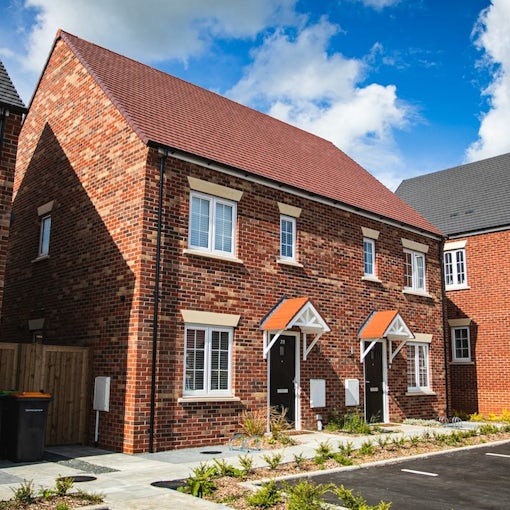Six simple steps to make the most of your outside spaceImpede weeds…
To keep the property’s garden looking at its best it’s important to win the war on weeds.
Create a weed-free garden by applying a topical weedkiller on a regular basis where necessary. Also, help prevent weeds from spreading or taking root by ensuring borders and beds have total ground coverage with bedding plants, wood shavings or pieces of slate.
If you have a weed problem affecting gravel driveways or paths, renew thinning gravel to create further depth and consider adding a membrane. Weeds between patio slabs can usually be removed by hand with ease but a specialist patio grouting can be introduced if they become problematic.
Be particularly aware of the real weed nasties too.
While many weeds are quite simple to remove or keep under control, some aren’t and will need immediate attention as soon as they are spotted, Japanese Knotweed, for example, is particularly destructive and can cause extensive damage if left. Make sure you are familiar with the distinctive characteristics of its flowers and leaves and, if you suspect that you’ve found it in your garden, seek expert advice at speed.
- Cut backs…
Overgrown bushes, trees or shrubs can suffocate surrounding foliage, plus cause extensive damage to nearby boundaries and buildings if not maintained.
Trim back large bushes and trees to ensure damage in the garden caused by overgrown branches or long roots is minimised. Boundary walls, wooden fences and even the foundations and the walls of the house itself (or neighbouring properties) can all be affected by this.
If a garden is left to become overgrown throughout the duration of the tenancy, then it will cost more money and take extra time to rectify later. If your shrubs are growing quicker than you or your tenant can manage to maintain them, then think about replacing fast-growing varieties with those which are easier to control. A low maintenance garden is beneficial to both the landlord and tenant alike.
Keep an eye on any Ivy too. Ivy can spread very quickly and has the ability to suffocate other plants, as well as penetrate walls, clog drains and block guttering. Cut it back or remove it entirely if it’s becoming a nuisance.
- Petal power…
For bright, bold, beautiful outdoor spaces add some petal power.
Don’t underestimate the value of flowers. Flowering plants can add height, colour, texture and fragrance to a garden and add to the overall presentation of a property and give it a homely feel, plus they attract wildlife, such as butterflies and bees too.
If you haven’t got generous borders or beds, introduce some potted petal power instead. Containers, troughs and pots can often be found in garden centres, auctions and junk shops and are a fabulous and inexpensive way to add interest and portable focal points to a garden with ease.
- Know your boundaries…
There’s no doubt that an enclosed and secure garden is near the top of most tenants’ wishlist so ensure that boundary walls and fences are adequately serving their purpose.
Are your boundary walls and fences structurally sound?. If not, they could pose to a hazard to your tenant and their visitors, as well as potentially causing damage to the rest of your garden and property.
During inspections check the condition of your boundaries, this is especially pertinent following periods of bad weather. Ensure none of your wood has started to rot and check that fence panels, trellising and fence posts are firm and secure, plus re-point stonewalls if necessary.
A little care and attention in the short-term can prevent more costly and time-consuming troubleshooting in the future.
- Small space, big potential…
Even the smallest of gardens can add perceived value to your rental property. Get creative to make a big impact in a small space.
Make the most of your garden, however large or small. Height creates the illusion of extra space so add this with climbing plants, trellis and tall shrubs. Also, if the budget allows add varying levels, such as decking, to build on this concept further. Bear in mind, though, any structural elements that you introduce are going to require ongoing maintenance so weigh up the value they will add for your tenant and to the property before committing.
If your garden is very small make sure it doesn’t look too busy – adding too many colours and textures will make the garden look overcrowded and draw attention to its size. Keep the design simple and colour palette streamlined where possible to maximise its potential.
If you have high ambitions but are short on ideas take inspiration from magazines, gardening programmes and the internet or ask your local garden centre for their advice.
- Aware and informed…
Is your tenant aware of what is expected of them in the garden? Brief them now!
Some of our landlords employ the services of a professional gardener to keep on top of garden maintenance. But if you don’t choose to do this then you need to make sure your tenant is adequately briefed on your expectations of them during their tenancy.
Tenants need to be fully informed of their role in the garden. Make sure they understand what they need to do and when (preferably in writing). Also, fully inform them of any historical problem areas they need to be particularly vigilant about and make sure they know they should report potential repairs as soon as they spot them in order to prevent small issues escalating.
- In the garden… at a glance
√ Loose fence panels and rotten posts should be fixed to prevent further damage.
√ Low maintenance gardens will be beneficial for you and your tenant.
√ Destructive weeds, such as Japanese Knotweed, should be dealt with at speed.
√ Get creative to make a big impact in a small space.
√ Flowers can be used to add colour, height, fragrance and focal interest.
√ Gravelled paths and driveways should be refreshed to prevent weeds.
√ Overgrown trees, Ivy and shrubs can cause damage. Cut them back.
√ Make sure your tenant knows what your garden maintenance expectations are during their stay.













